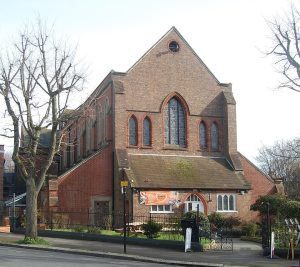Family folklore records the visit to Brighton of (still unidentified) relatives of Patrick ahead of his proposed wedding to Edith in 1920. The story is that they endeavoured to ensure that Patrick’s bride-to-be would convert to Catholicism and that subsequent children would be raised as Catholics. The exact nature of Patrick’s response is not known. The fact that there was no further contact with his family throughout his lifetime strongly suggests that his answer was short, sharp and not to their liking.
I had always assumed that this was simply a case of the family trying to ensure that he stayed within the faith in which he had been raised. I now learn that the issue was far more significant.
In August 1907 Pope Pius X issued a decree popularly called ‘ne temere’ (after the opening words). It required mixed marriages (those between a Catholic and a non-Catholic) to take place in a Catholic Church to be valid (Point 1). Children born to the marriage were required to be raised as Catholics (Point 2). Ideally, the non-Catholic should be asked to convert (Point 3). According to the Irish Times, the loosely held convention prior to this edict was for boys to follow the faith of the father and girls their mother.
The Edict caused consternation in Ireland. The sizeable Protestant communities could see that their numbers would be slowly, but steadily, eroded if the decree was strictly implemented. (10.2% of the population declared themselves to be protestants at the 1901 census.) The matter was raised in (the British) Parliament. In February 1911, the 6th Earl of Donoughmore addressed the House of Lords. He pointed out that a marriage that was legal under civil law could be seen as invalid under church law. A conflict between Church and State. His intervention is available to read online.
The Edict was incorporated into the 1917 Code of Canon Law. The 1917 Code brought together centuries of Church law. An English translation (together with scholarly notes) runs to over 600 pages. The penalty for a breach of the Edict was latae sententiae excommunication. “latae sententiae” means that it is automatically imposed without the requirement for any further intervention.
It is now clear that Patrick’s relatives were being driven by a desire to see that he did not contravene the explicit teachings of the Church. I assume that the importance of their mission had been made clear to them by their local Parish Priest. I am guessing that there had been some correspondence within the family in the time leading up to the marriage. He must have told them what he was planning, and that this had caused considerable alarm.
In April 1920, Patrick married Edith in St Augustine’s (Anglican) Church (Point 1 above). The children were sent to Sunday School and Youth organisations in the local churches (Florence Road Baptist Church for the Boys Brigade) (Point 2). Edith did not convert (Point 3).
Patrick was not even an occasional churchgoer after his time in the Army in the Great War. I now have some understanding of the reasons. I was surprised to learn (from my father) that Patrick kept his rosary beads throughout his life. I am not sure what to make of that.
Picture: St Augustine’s Church (now used as a community centre.)

